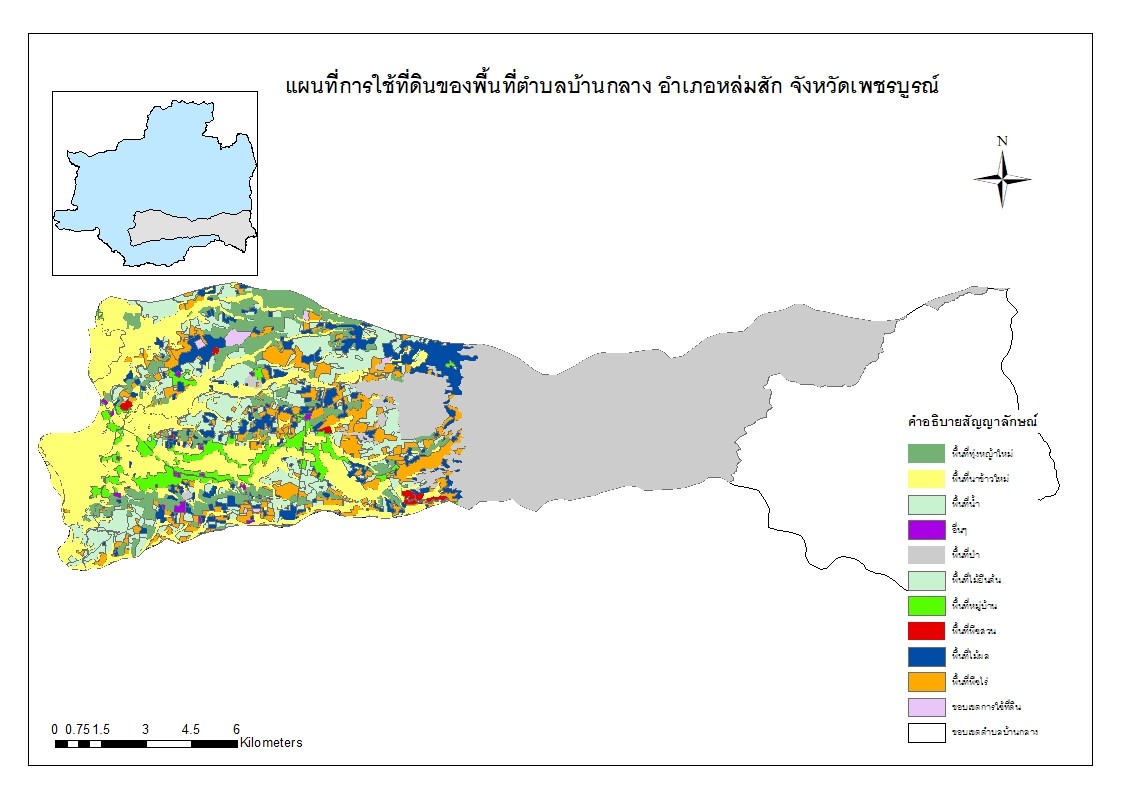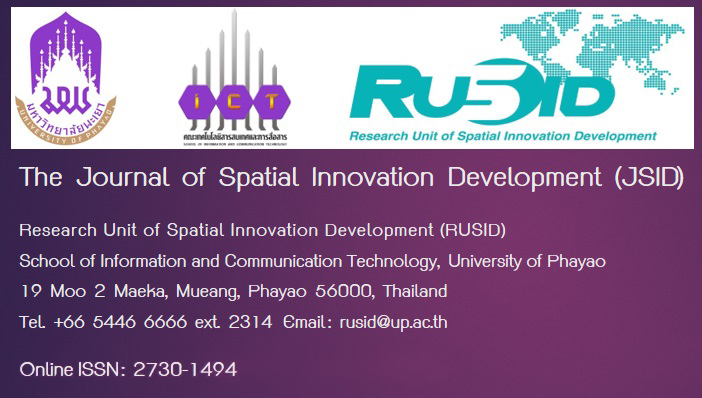Assessment of Water Budget and Demand for Agriculture in Ban Klang Subdistrict, Lom Sak District, Phetchabun Province
Keywords:
Water Budget, Demand for Agriculture, Ban Klang SubdistrictAbstract
The purpose of this study was to assess the water budget and demand for agricultural areas in Ban Klang subdistrict, Lom Sak district, Phetchabun province, and along with suggesting guidelines for adjusting the planting pattern in accordance with the amount of water budget. The methods of this study consist of estimated water budget from runoff volume (R) by equation R = PCA using 30-year average monthly rainfall data (P), runoff coefficient from land use data (C) and the study area size (A). Then, the plant water demand (ET) was analyzed from the equation ET = Kc * ETP consisted of the plant water use coefficient (Kc) and the evaporative potential of the plant or reference plant water use (ETP). Then, compare the cost of water budget with the amount of monthly water demand and to analyze the sufficiency or insufficiency of water for agriculture in the area.
The results showed that Ban Klang subdistrict has a total cost of water budget 116,867,68 m3 per year, while the total agricultural water demand is 328,532,06 m3 per year, accounted for approximately 211,664,38 m3 of water per year. When considering on a monthly basis, it found that only 2 months the amount of water budget was higher than the amount of water needed for agriculture was August and May with excess water at 4,230,614 and 3,766,929 m3, respectively. For the month when the amount of water budget less than the amount of water required for agriculture, accounted for the largest volumes were October, November, December and February. The results of this study can be used to plan planting according to the amount of water budget and to adjust the planting system to suit the limited amount of water available.
References
กรมอุตุนิยมวิทยา. (2564). หนังสืออุตุนิยมวิทยา เรื่อง ภัยแล้ง (drought). สืบค้นจาก https://www.tmd.go.th/info/info.php?FileID=71
ไชยสิทธิ์ เอนกสัมพันธ์. (2553). แนวทางการวางแผนและออกแบบระบบอนุรักษ์ดินและน้ำในไร่นา คู่มือเจ้าหน้าที่ของรัฐ การอนุรักษ์ดินและน้ำในเขตพัฒนาที่ดิน. กรุงเทพฯ: กรมพัฒนาที่ดิน กระทรวงเกษตรและสหกรณ์.
ทัศวรรณ หานุภาพ. (2556). การประเมินน้ำต้นทุนในเขตจังหวัดภูเก็ต. สงขลา: สาขาวิชาเทคโนโลยีและการจัดการสิ่งแวดล้อม มหาวิทยาลัยสงขลานครินทร์.
ธรรมนูญ แก้วคงคา. (2549). เอกสารวิชาการ การให้น้ำชลประทานกับพืช. กรุงเทพฯ: กลุ่มวิจัยปฐพีวิทยา สำนักวิจัยพัฒนาปัจจัยการผลิตทางการเกษตร กรมวิชาการเกษตร.
ศูนย์อุตุนิยมวิทยาภาคเหนือ. (2566). ปริมาณน้ำฝนสถานีตรวจวัดน้ำฝนอำเภอหล่มสัก จังหวัดเพชรบูรณ์ รอบ 30 ปี ระหว่างปี พ.ศ. 2535-2564. กรมอุตุนิยมวิทยา.
สำนักข่าวกรมประชาสัมพันธ์. (2563). เดินหน้าแก้ไขปัญหาภัยแล้งในพื้นที่จังหวัดเพชรบูรณ์. สืบค้นจาก https://thainews.prd.go.th/th/news/detail/TCATG200418173005243
สำนักงานเกษตรอำเภอหล่มสัก. (2565). ผลการขึ้นทะเบียนเกษตรกรผู้ปลูกพืช ปี 2564/65. สำนักงานเกษตรอำเภอหล่มสัก กระทรวงเกษตรและสหกรณ์.
อนิรุจน์ คำนล. (2561). การประเมินน้ำต้นทุนและความต้องการใช้น้ำเกษตรกรรมในพื้นที่ลุ่มน้ำยม. กรุงเทพฯ: สาขาวิชาการจัดการสิ่งแวดล้อม สถาบันบัณฑิตพัฒนบริหารศาสตร์.
องค์การบริหารส่วนตำบลบ้านกลาง. (2565). สภาพทั่วไปของตำบลบ้านกลาง. สืบค้นจาก https://www.ban-klang.go.th/condition.php




